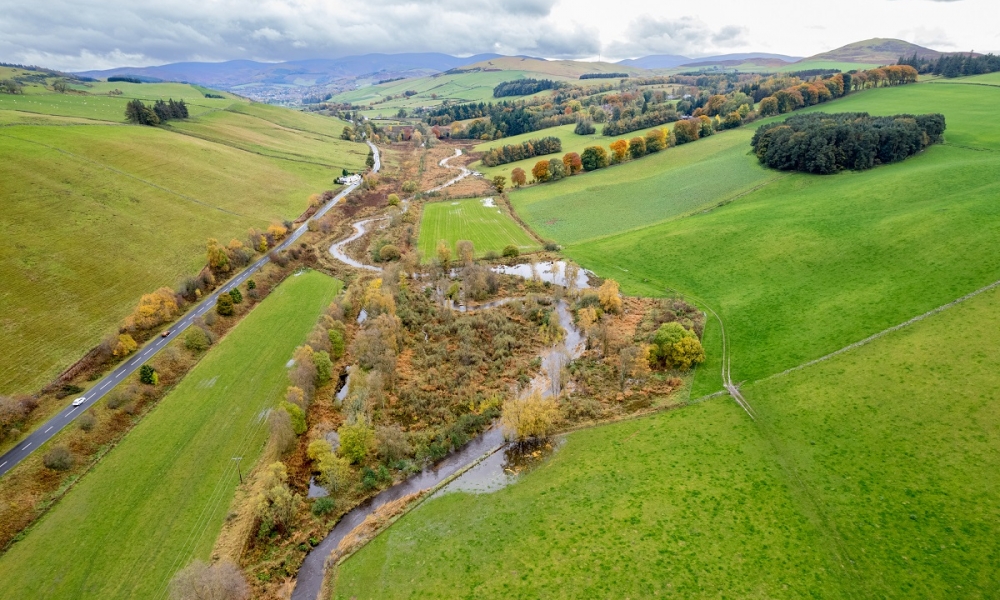Nature-based Solutions can help us adapt to climate change – with more support in the National Adaptation Programme
Associated Sprints
Recent News
- Agile at the BES Symposium
- Youth-Led Research and Policy
- Greenhouse gas uncertainties: expanding the impact of research

Nature-based solutions can help communities and businesses cost-effectively adapt to climate change impacts such as floods, droughts and heatwaves, but they need more support in the third National Adaptation Programme.
Across the UK, a wide range of nature-based solutions (NbS) are already proving to be effective. Farmers are building up soil health to improve resilience to both floods and droughts. Communities are restoring native woodlands in upper catchments and building ‘leaky dams’ to capture and store rainfall in the landscape, reducing flood peaks downstream. Green roofs and street trees are cooling our towns and cities, and sustainable drainage systems of ponds and raingardens are soaking up stormwater and letting it filter back into the ground, to replenish our depleted aquifers. On our coasts, restoring saltmarshes in front of sea walls can protect them from damage, reducing the cost of maintenance.
At the same time, NbS can deliver multiple additional benefits for people, nature and the economy. Unlike energy-intensive engineered solutions such as dams, sea walls and air conditioning, they address both the causes and the impacts of climate change by storing carbon in soils and vegetation. Restoring healthy ecosystems is vital to meet our nature recovery goals and provide habitat for wildlife. And there is strong evidence that accessible nature-rich green spaces support human health and well-being and can play a major role in regenerating and levelling-up deprived communities. NbS should be designed in partnership with local communities and informed by high quality interdisciplinary research, to maximise benefits for biodiversity and people locally.
Nature-based solutions can help to address all of the eight highest priority climate risks in the UK and its overseas territories that were identified in the third Climate Change Risk Assessment (CCRA3), published in 2022, and 33 out of the 34 risks where more action is urgently needed.
In response to CCRA3, the governments of each UK country are developing their third round of National Adaptation Programmes (NAPs), with the NAP for England due this summer (2023). England’s second NAP recognised a limited range of NbS: peatland restoration, urban trees, natural flood management and saltmarsh creation, with some funding to support these options. However, the overall scale of deployment was relatively small. Scaling up the use of NbS is a priority for the third National Adaptation Programme.
The Agile Initiative has produced a policy brief to show how to embed support for a much wider range of NbS in England’s third NAP. Opportunities that were missed in the second NAP include green roofs and walls, sustainable drainage systems, agroforestry, nature-based agriculture, the use of vegetation for stabilising slopes, rewilding, natural regeneration of woodland, seagrass and kelp restoration, and (in the overseas territories) mangroves and coral reefs for coastal protection. We show how these options can be supported through a strong and consistent policy framework, well-targeted funding, high quality standards and a robust monitoring system.
There is now an unmissable opportunity to rapidly scale up the use of NbS to help address climate risks, while simultaneously delivering multiple benefits for health, biodiversity and the economy. We hope that the recommendations in this policy brief will help to show the way forward to a safer, greener, more resilient and prosperous UK.



